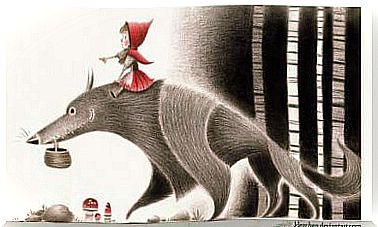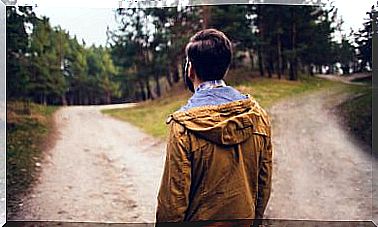Soren Kierkegaard: Biography Of The Father Of Existentialism
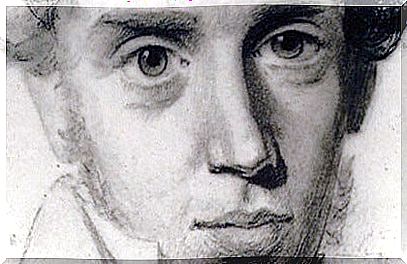
They tell of Soren Kierkegaard that he loved Regina Olsen until the last day of his life. However, his purpose was to dedicate himself, body and soul, to the study of philosophy and the Christian faith. This Danish theologian and philosopher always dealt with the weight of that anguish, with the suffering of not being able to free himself from his affections. However, thanks to this he was able to shape his theoretical legacy.
Kierkegard’s work is based on the sense of faith. Only through this dimension was it possible to achieve salvation and balance in moments of despair. This perspective was, in turn, a reaction to Hegel’s idealism. Furthermore, an aspect that defined the famous Danish philosopher was also his critical voice before those religious institutions that acted, according to him, with hypocrisy.
In his books Fear and Trembling, Philosophical Crumbs or The Diary of a Seducer we understand that dualism that sifted all his life. Love, suffering and the impossible passion in the face of the need to dedicate himself to theology marked that tumultuous day to day of one of the most relevant and interesting figures in philosophy.
Thus, while the Danish church proposed a rational God who rewarded good works, the God of Kierkegaard did not understand devotions, he only responded to fear. His philosophy laid the foundations for 20th century existentialism. He defined human subjectivity and the individual better than anyone else to differentiate him from the masses, and he also served as an inspiration to thinkers such as Jean-Peal Sartre, Friedrich Nietszche and Albert Camus.
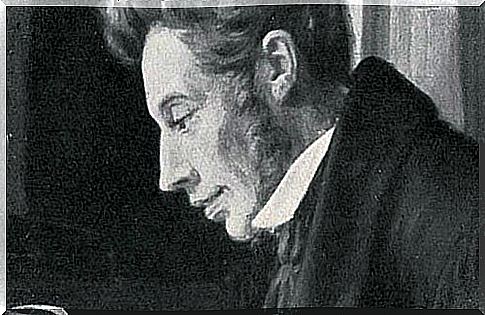
Biography of Soren Kierkegaard
Soren Kierkegaard was born into a wealthy Copenhagen family in 1813. He was the son of Michael Pedersen Kierkegaard, a steadfastly religious Jutland shepherd with a very puritanical sense of existence. His mother was Anne Sorensdatter Lund Kierkegaard, a young servant whose father made her pregnant and because of which she always felt the weight of sin upon her.
The young Soren went to the School of Civic Virtue, to later continue with his paternal designs: to study theology at the University of Copenhagen. Now, it should be noted that he was always more interested in philosophy and literature. Likewise, a remarkable fact of his early youth was meeting Regina Olsen at the age of 15, with whom he became engaged when he finished his studies.
However, his father died in 1838, but not before making Soren promise him something very concrete: that he would become a pastor, that he would consecrate his life to God and to study. The weight of that promise then became that anchor that irremediably stopped his emotional life. He broke off his engagement to Regine, made her return the ring, and later left for Berlin.
The next 10 years would be the most productive in the life of this young theologian. The creation that originated in that period was undoubtedly one of the most remarkable in the history of literature.
Love, guilt and suffering
In 1943 he published 6 works. One of them is undoubtedly Temor y Tremor where he delves into a theme that will be recurrent in most of his works: his love for Regine. In this work, he navigates guilt, pain, and a devoted sense of obedience to his religion. Just in that same year, he discovers when he returns to Copenhagen that the young woman has just married Fritz Schegel.
That fact completely erases any second chances. Something that he had prevented himself now loomed as an even harsher and more unfathomable reality. The months that followed were also very fruitful, from a literary and philosophical point of view.
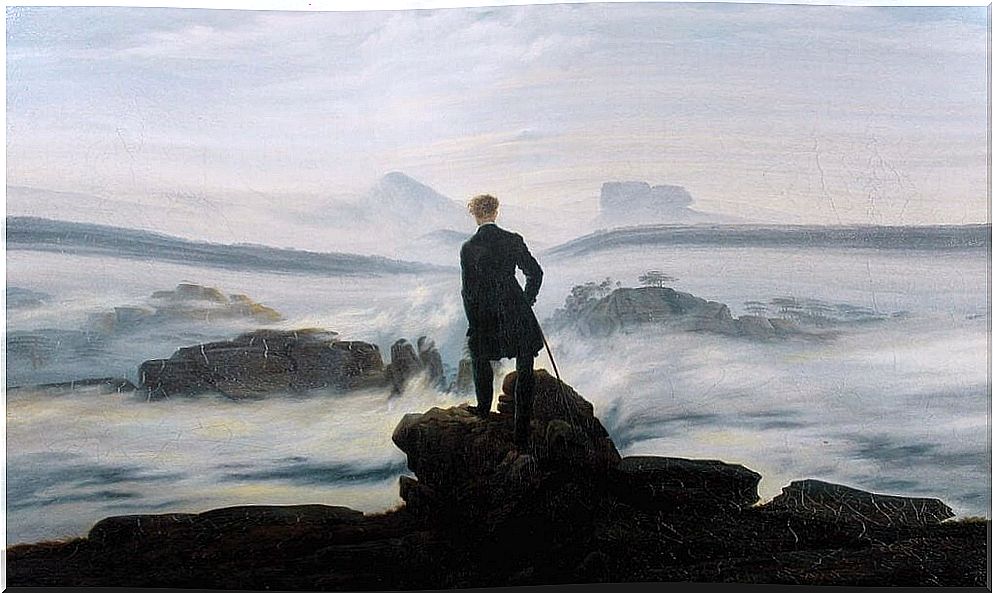
Notable, for example, are his works focused on the criticism of the theories of Georg Wilhelm Friedrich Hegel. Books like Philosophical Crumbs, The Concept of Anguish and Stages of the Life Path tell us about those thoughts and emotional realities experienced by the person facing adversity. Something in which he was quite a specialist.
Soren Kierkegaard and his brother Peter were, little by little, the only survivors of a family characterized by tragedy. The father always reminded them that they were cursed, that the shadow of sin weighed on them and that, therefore, they would all leave the world early. Ironically that “prophecy” was fulfilled. Because he himself would also end up dying early at age 42.
It was never very clear what was the cause of his death. It is known that he had some kind of disability, that his health was never good. However, this did not prevent him from leaving us a rich and exceptional literary and philosophical legacy. In turn, it is interesting to highlight one detail: Soren Kierkegaard included Regina in his will.
The legacy of Soren Kierkegaard
William James was very fond of quoting one of Soren Kierkegaard’s best-known phrases “we live forward, but we understand backward.” He was the Danish philosopher and theologian of subjectivity. Thus, and although at first it seems to us that everything he left us was impregnated by a certain negativity and despair, it must be said that it was not.
He taught us that living is knowing how to choose. He made us see that in each election our existence is shaped to define who we are and what we are leaving behind. Likewise, he also wanted to make an effort for people to understand the meaning of anguish and suffering. All of this is part of life and the only way to alleviate pain is, according to Kierkegaard, through faith.

The writer of pseudonyms and existentialism
Soren Kierkegaard carried out much of his work under various pseudonyms such as Victor Eremita, Johannes de Silentio, Anti-Climacus, Hilarante Bookbinder or Vigilius Haufniensis. Doing it this way actually served a very specific purpose: to represent different ways of thinking.
This strategy defined what he called “indirect communication.” In this way, he could explore points of view different from his own and thus reach the reader in a richer and deeper way. In turn, one of the purposes of Kierkegaard was also to teach how a person could lead life, thus establishing three types of existence:
- The first sphere is the aesthetic sphere. This defined a mode of existence centered on pleasure, hedonism or nihilism.
- The ethical sphere shapes an existence where the individual is capable of taking responsibility for himself. Here one can differentiate between “good and evil” and be consistent with those principles.
- The religious sphere was the highest for Kierkegaard. In it, the human being achieves a personal relationship with God from which to achieve nobler purposes.
The philosopher of anguish, the philosopher of self-irony
Figures like Albert Camus did not hesitate to define Soren Kierkegaard as the philosopher of self-irony. It was that theologian who defended the faith above all things, but who never hesitated to attack the Danish church. It was that young man who rejected the love of his life, but who never stopped loving the girl who served him as an absolute muse in most of his works.
Likewise, he always exalted the need to cultivate a religious spirit, however he himself lived immersed in an aesthetic-ethical sphere.
Another aspect that defined him was that concept that would mark the work of great later writers such as Kafka, Unamuno or the philosopher Ludwig Wittgenstein. We mean anguish. That feeling that according to Fernando Savater will never go out of style. Because that state (in Danish: b egrebet angest) also defines an experience where, suddenly, we become aware that there are more options. That we are free to jump into the void or take a step back and seek other paths.
There are always alternatives to suffering, but suffering itself also helps us grow. The teachings of Soren Kierkegaard as we see, will always be present.


